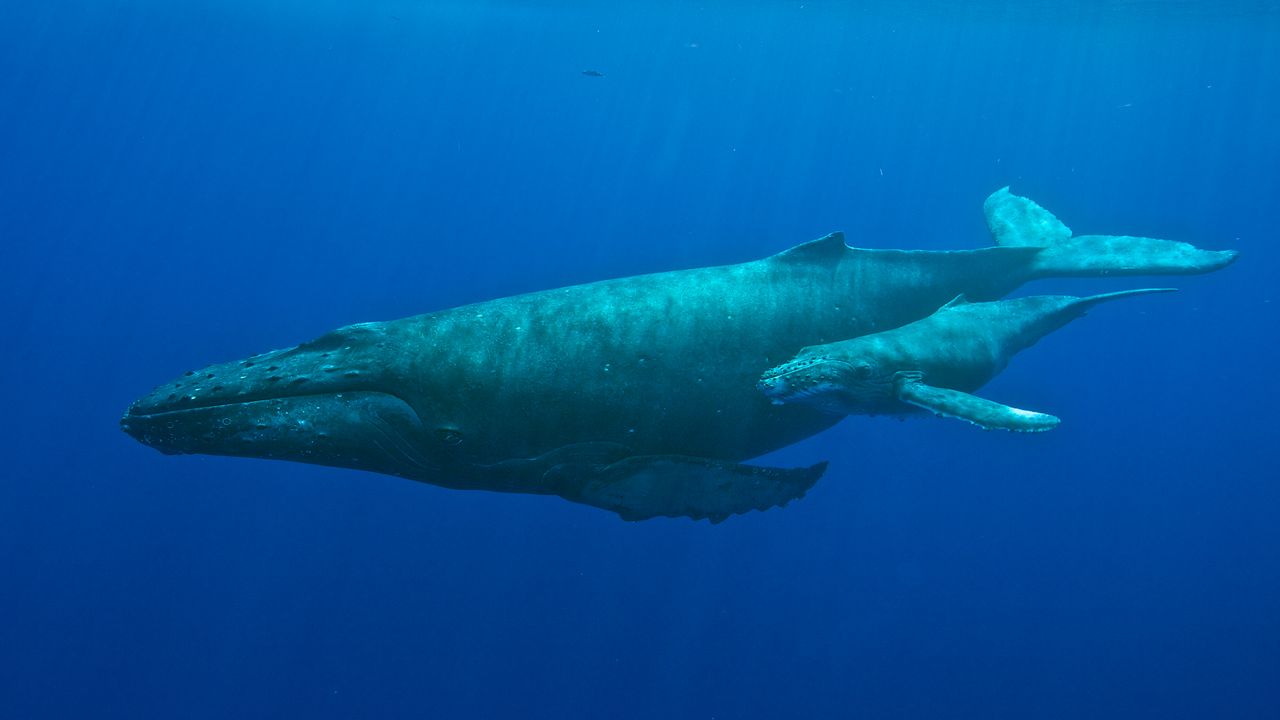HAWAII — The kohola, or humpback whales, have been seen throughout the Hawaiian Islands in recent months. The first one of the season was spotted in late September in waters off Maui, providing an early start to the 2021-2022 humpback whale season.
“To date, all the islands have reported sightings,” said Edward Lyman, natural resources specialist at Maui’s Hawaiian Islands Humpback Whale National Marine Sanctuary. “Typically, the waters off leeward Maui have some of the highest sighting rates over the whale season, but they can be found around all the islands. Sightings of humpback whales generally increase into their peak season, January through March.”
According to the NOAA, humpback whales spend their summer months feeding in the waters of Alaska, British Columbia and eastern Russia. The milder weather in these colder regions supports an abundance of krill, plankton and other small fish on which the humpbacks feed.
As water temperatures begin to drop, their food source dwindles. And just as their ancestors have done for thousands of years, humpbacks begin their annual migration of approximately 3,000 miles to the breeding grounds in waters surrounding Hawaii, Asia, Central America and Mexico.
Along the way, they face dangers, including predators such as sharks and orcas, vessel strikes, entanglement in fishing gear, pollution, noisy oceans, harassment, and now, climate change.
“During the time frame starting in 2013 and through recent years, the sightings around the islands had decreased,” said Lyman. “A primary hypothesis is that climate change was either directly or indirectly affecting the animals’ food resource and habitat usage. This in turn could affect migration (e.g. perhaps not migrating as far; if the fuel tank isn’t full, perhaps one doesn’t go as far or stay as long), the production of calves, mortality rates, etc. All of these in turn could affect other risks, like entanglement and vessel collisions. The sanctuary has gathered data suggesting that this is indeed the case.”
Once in Hawaii’s warm waters, the focus is to mate, give birth and raise calves; they don’t eat since tropical waters have less food. Mothers reserve their strength for feeding, protecting and (it can be said) teaching their calves (e.g., how to breach). Because they’re not eating, any extra exertion tends to wear them down.
In February 2021, the tail end of the 2020-21 whale season, scientists and boaters out in the field observed an abundance of mother and calf pairs. This season looks to be the same, barring any dangers mentioned above.
Mothers and calves tend to favor the shallow, protected waters between Maui, Lanai and Molokai. Lyman said this area typically represents some of the higher densities of the animals across the main Hawaiian Islands.
Although your closest encounter with these majestic giants will be out on the water, they are visible from land. Some of the best viewpoints on Oahu include Makapuu Lighthouse Trail and Halona Blowhole.
On Maui, the most favorable spot is Puu Olai near Makena State Park’s “Big Beach.” Another is Kihei’s Hawaiian Islands Humpback Whale National Marine Sanctuary Visitor Center. The visitor center is currently closed; however, a volunteer in the office said visitors can park outside and walk around the building to access educational boards, the shoreline and a historical three-acre pond, Koieie.
On Hawaii Island, viewpoints include Lapakahi State Historical Beach Park and Puukohola Heiau National Historical Site.
On Kauai, Kilauea Lighthouse along the northern coast has a panoramic view of the Pacific.
Behaviors to look out for include breaching (jumping out of the water), spouting (blowing air and water through their blowholes), spyhopping (lifting its head above the ocean surface) and slapping their tails or pectoral fins on the surface. Binoculars will increase your chances of seeing any action in the distance.
Lyman advises everyone out on the water — in a boat, on a stand-up paddleboard, or just swimming — to adhere to the 100-yard rule that states to not approach the animals by any means within 100 yards or repeatedly place yourself directly in the whale’s path, known as leapfrogging. Hawaii is a very important place and time for them, he said, so they need our kokua (help).
“We humans share the habitat with these animals and thus can pose threats that we need to be aware of and reduce,” he added. “At the same time, we can also be stewards and help the animals as appropriate.”
Many tour operators, fishers and whale researchers help by monitoring the whales, reporting a compromised whale, providing initial risk assessment and the documentation that goes with it. If an authorized response is decided upon, they may stay with the animal from a safe and legal distance until the responder team arrives.
“These are all first responder roles,” said Lyman. “The on-water community is the foundation of our efforts.” He suggested that people wanting to learn more about being a whale first responder can take an online first responder training here.
“While the humpback whales in this particular population are recovering to the degree they have been taken off the Endangered Species List, threats still exist,” explained Lyman. “They need our continued protection, respect and kuleana. With (the) recent increase in environmental changes, they are one of our ‘canaries in a coal mine’; very big, iconic, culturally significant, biologically important, charismatic megafauna canaries.”








